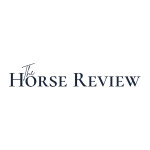How will tariffs impact the horse industry, from equestrian businesses to breeders, and explore strategies for financial planning and community innovation to ensure a sustainable future.
The horse industry, a vibrant and diverse ecosystem of breeders, equestrians, and professionals, is poised to face significant challenges due to the recently implemented 25% tariff on imported goods by the United States. From importing horses and breeding materials to procuring essential equestrian products, horse enthusiasts and businesses alike are bracing for the impact of these economic shifts. Here's a breakdown of how these tariffs could affect various aspects of the industry, along with considerations for mitigating their effects.
Table of contents [Show]
Importing Horses
One of the most immediate and profound impacts of the 25% tariff is on the importation of horses. Breeders, competitive equestrians, and trainers sourcing horses from nations like Canada, Ireland, and France are now faced with increased costs.
Financial Implications
For instance, purchasing a horse valued at $100,000 and shipping it to the U.S. could incur an additional $25,000 in tariffs, on top of a $50,000 temporary import bond, bringing the total additional cost to $75,000. For breeders and owners, this financial burden may dissuade international purchases, limiting access to certain bloodlines and talent pools.
Temporary Imports
Horses imported temporarily—for purposes such as racing or competitions—are eligible for a Temporary Import Bond (TIB). This allows them to enter the U.S. temporarily without immediate payment of the tariff, provided they return to the originating country within a specified timeframe, usually up to one year. However, the bond requires a deposit covering 100% to 200% of the tariff amount. While refundable, this deposit creates a significant cashflow constraint for owners.
Breeding with Foreign Sires
The equine breeding industry also stands to experience ripple effects. The 25% tariff applies to equine germplasm, such as imported semen and embryos, increasing the cost of breeding U.S. mares with foreign sires.
This added expense may push breeders to reconsider using international bloodlines, potentially narrowing the genetic diversity available. Alternatively, breeders could start prioritizing domestic stallions, boosting local breeding programs. While this could have long-term benefits for U.S.-based sires, it limits access to globally renowned genetics.
Rising Costs for Equestrian Products
The tariffs also extend to imported equestrian goods, such as saddles, boots, and riding gear, adding financial pressure across the industry. For example, cowboy boots manufactured in Mexico may see significant price increases at the retail level.
Businesses reliant on importing these goods now face a tough decision: absorb the additional costs and accept lower profit margins or pass the costs on to customers. Either option could have cascading consequences, impacting both accessibility and affordability for riders, enthusiasts, and professionals.
For businesses that cater to middle-income consumers, this presents a challenging scenario. Higher retail prices might discourage purchases, potentially reducing customer engagement with equestrian activities.
The Overall Cost of Horse Ownership
The combination of increased horse import fees, higher costs for breeding materials, and pricier equipment will inevitably elevate the overall cost of horse ownership. While the industry is no stranger to significant financial investments, the additional burden may deter potential entrants, particularly middle-income individuals who are vital to keeping the industry diverse and thriving.
Industry-Specific Adjustments Under the USMCA
Fortunately, not all news is grim. Under the United States-Mexico-Canada Agreement (USMCA), horses eligible for transport between Canada and the U.S. will continue to enjoy duty-free movement. According to the Paulick Report, "The sliver of good news is that horses traveling to the U.S. from Canada and Mexico are both immune from the tariffs because of the existing United States-Mexico-Canada (USMCA) trade agreement negotiated during the first Trump administration. Horses were exempt from tariffs in that agreement." This provision provides some relief and a critical trade link for breeders and competitors reliant on cross-border collaborations.
Considerations for Equestrians
Faced with the escalating costs stemming from tariffs, equestrians and industry participants must adopt proactive strategies to manage this evolving landscape.
Stay Updated on Policy Changes
Trade policies are dynamic and subject to revision. By staying informed about tariff developments and monitoring updates from trade organizations like the American Horse Council, equestrians can better plan for their financial and operational future.
Financial Planning
With the rising costs associated with horses, breeding, and equipment, robust financial planning is essential. Horse owners and businesses should budget for increased expenses and explore ways to optimize resources, such as sharing equipment or utilizing innovative technologies.
Engage in Advocacy
Collaboration with industry groups and policymakers is critical. Industry professionals can voice their concerns through advocacy groups, emphasizing the importance of maintaining affordability and accessibility within the equestrian world. By working together, stakeholders can push for exemptions or adjustments to current tariff policies.
Support American Breeders and Businesses
Investing in American breeders and companies specializing in horse products can play a significant role in offsetting rising costs within the equestrian industry. Choosing American-bred horses not only supports the local economy but also reduces expenses related to international shipping and tariffs. Additionally, purchasing tack, feed, and gear from reputable American companies helps minimize logistical costs while ensuring high-quality products. Top breeders offer exceptional American-bred horses, while businesses like Weaver Leather, Kerrits, and SmartPak specialize in equestrian supplies crafted domestically. Supporting American breeders and companies fosters a more sustainable industry while promoting affordability for equestrian enthusiasts.
While the 25% tariff on imported goods undeniably brings challenges to the horse industry, opportunities also exist for adaptation and resilience. For example, the increased costs may push the industry to prioritize domestic resources, fostering innovation and growth within the U.S. horse breeding and equestrian products sectors.
Key Takeaways
- Businesses should evaluate alternative sourcing options to reduce heavy reliance on imports.
- Organizations must aim to adjust pricing strategies without alienating their user base.
- Collaboration, innovation, and advocacy will remain vital tools for addressing and mitigating the challenges posed by the tariffs.
Final Thoughts
The horse industry has always been a symbol of resilience and adaptability. Despite the challenges posed by the new tariffs, this is an opportunity for the industry to innovate, value domestic resources, and strengthen community connections. By staying informed, planning financially, and advocating for necessary reforms, horse owners, breeders, and equestrian businesses can ensure the industry remains vibrant and accessible.
What are your thoughts on how the tariffs will affect the horse industry? Share your comments below and join the conversation.









